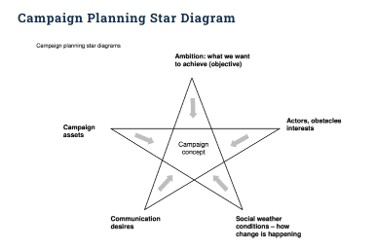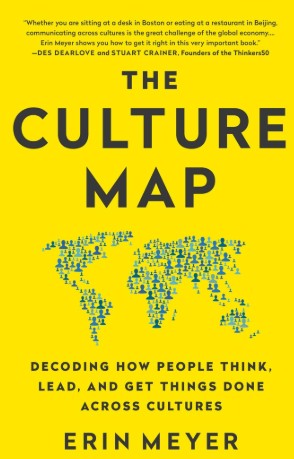
I’ve combined the key delegate insights from the two most recent MBL workshops on referrer management (http://www.mblseminars.com/Outline/Developing-More-Work-from-Referrers-_-Intermediaries/5770/) in London and Manchester to provide 14 pragmatic steps to improved referrer management. The sessions had a fascinating and productive blend of views from senior leaders, fee-earners and business development professionals.
1. Analyse the current situation and set goals
A starting point – whether looking at a firm-wide referrer management programme or for an individual fee-earner – is to analyse what has happened in the past and what is currently occurring. There may be some trends. There may be clues as to the particular types of referrers to target. Alternatively, you may be looking at a blank sheet.
After analysing the current situation – and obtaining baselines against which progress can be measured – you can decide on your goals and objectives. These may be general aims such as to increase the volume or value of particular types of referrals from specific referrer types. It may be to increase the quantity or quality of referrals from existing referrers. Alternatively, you may have goals that simply identify a new source of referrals.
Once you are clear on your overall goals you can manage expectations, select the right mix of activities and measure progress and return on investment.
It may be that the majority of your best referrals come from other teams within your firm in which case you will be analysing internal work flows and concentrating on cross-selling (see, for example http://kimtasso.com/cross-selling-big-questions/ or http://kimtasso.com/a-personal-approach-to-cross-selling/) and internal marketing . Or you may see that existing clients are the main source of referrals in which case you will need to investigate influencer marketing and client relationship management programmes (see, for example: http://kimtasso.com/client-satisfaction-benchmarks-measure/)
2. Focus your referrer management efforts
Whilst it should be obvious that you consider your referral management strategy as part of the overall marketing and business development plan – some firms still see it in isolation. Some markets and types of work are far more reliant on referrals than others. Some need to focus on internal referrals and some on external referrals.
But you also need to ensure that the appropriate profile-raising, content management, events and social media programmes are geared up to be an integral part of your referrer management programme.
You might need to segment your referrers and develop different approaches depending on the nature and needs of each segment – for example, the way you approach specialist niche insolvency practitioners might be very different to how you approach full-service real estate consultancies (see http://kimtasso.com/back-basics-importance-segmentation-personas/).
You need to decide where to concentrate your referrer relationship management efforts – as not all referrers are equal. Some firms use the Pareto rule and focus on the 20% of referrers who generate 80% of the work (see http://kimtasso.com/be-more-t-rex-client-management-with-dinosaurs/) Some firms may decide to develop criteria to help them select the most attractive referrer relationships where they have the greatest chance of success.
The process for grading and prioritising different types of referrer relationships – and the programmes that support the different categories – is described here http://kimtasso.com/structured-programmes-for-referrer-relationships/
Those firms that have a sort of clown fish, symbiotic relationship with just one or two key referrers may decide to adopt an account based marketing (ABM) or key account management (KAM) approach. ABM or KAM approaches drive you to develop a focused marketing and sales strategy at a single organisation (see http://kimtasso.com/key-account-management-kam-programme/).
3. Research potential and existing referrers
Before making an approach to arrange a meeting with a referrer you need to undertake some research. This extends from understanding the nature of the referrer organisation – a bank, a law firm, an accountancy practice, an insolvency practitioner, a surveying firm – to how that particular organisation is structured.
Then there is detailed information about the referring organisation to collect as well as building a profile of the individuals that you know and those that you need to know. You will interrogate your internal systems to see what referrals have been made in and out in the past. And you will need to look at lots of external data – industry associations, web sites, specialist media, key events and social media – to gain a rounded picture.
At the workshop we spent some time seeing how much we knew about our key referrers using a simple proforma profile – most delegates realised that they knew far too little about their referrers. And then we created a plan to research and learn more. http://kimtasso.com/referrer-and-intermediary-management-internal-information-systems/
Beyond seeing the qualitative and quantitative information about referrer firms you will need to consider the personalities of the different individuals at those firms so that you can effectively match the chemistry with your people.
4. Find out why they refer
Referrers send clients and work your way for a variety of reasons. We looked at some of the research in this area.
(By the way, at one of the sessions we asked the accountants, insolvency practitioners and property professionals to what extent they used legal directories to identify or check the lawyers they were recommending and it was interesting to see that hardly any did).
We spent a fair amount of time talking about empathy – putting ourselves in the shoes of the referrer and seeing things from their perspective. Empathy – part of the emotional intelligence skill set – is vital for developing relationships. (see http://kimtasso.com/take-a-walk-on-the-client-side-empathy-and-emotional-intelligence-when-selling-professional-services/ ).
Larger firms invest in structured client and referrer listening programmes. But smaller firms can conduct similar exercises – doing initial research, preparing a structured list of questions and focusing on what the referrer refers and to whom and why.
Understanding how the referrer perceives your firm and its individuals and their attitudes to risk will be a key insight into how to develop the relationship further. For example, if they have pigeon-holed you into serving a particular type of client then you can present stories and evidence to show how you can help in other areas.
5. Plan the development of each referrer relationship
Armed with detailed information about the organisation and individuals at your target referrer, you can pull together all the information into a profile. Then you can talk to all those in the team who are connected to the referrer and build an action plan.
Responsibilities should be allocated – for the person with overall responsibility for the relationship, for the person co-ordinating information management, for those who are to undertake specific activities and for particular goals.
The plan may have a number of short and long term actions – examples include: sending regular information, meeting for coffee, organising CPD events, presenting to each other, introducing others in the team, sharing content on social media, collaborating on articles and joint marketing activities such as webinars and seminars.
The profile information, recent developments and activities, new insights and progress against planned actions needs to be reviewed on a regular basis.
6. Plan meetings with referrers
Whilst meetings with new referrers should be focused on creating rapport and trust and a working relationship, they shouldn’t be left to chance.
If you have done your research in advance – looking at the nature of the clients and services of the referrer – there will no doubt be some gaps in your knowledge. This means that you can plan what you want to learn at the meeting – whether it is about how the organisation is structured, how decisions about referrals are made or the way in which the referrer prefers to work with organisations. Like all selling there is a need to “be more detective”.
Depending on the maturity of the relationship, you might have different approaches at meetings during the life cycle of the referrer – just as you would with a key client (see http://kimtasso.com/managing-key-client-meetings-key-account-management-kam/).
Remembering that we are always effectively promoting and persuading referrers to refer relevant clients and work to us, it is important to ensure that the referrer gets something back. This may not be reciprocal work. In each interaction you need to find ways to add value to the referrer. http://kimtasso.com/referrer-management-what-do-you-do-when-you-cant-reciprocate-work-referrals/
Many firms will do this with information, connections and insights. Or with ideas and contacts that will help the referrer build their business. Sometimes it is to help them personally or their families, to support members of their team or their organisation. An understanding of any sales process will be helpful but material on insight selling (and how you can leverage any thought leadership content you have) will be particularly so (http://kimtasso.com/book-review-insight-selling-mike-schultz-john-e-doerr/).
Ensure at each meeting that it is clear what the next step might be and gain agreement to it before leaving.
7. Ask more questions
Too many professionals believe that when they meet potential or existing referrers that they should spend time telling them about their expertise, services and organisation. But telling isn’t selling.
During the early phases of the referrer relationship the emphasis should be on forming a strong personal bond and learning more about the people, services, clients and challenges facing the referrer – a similar approach to developing a new business client relationship. All sales methodologies and processes are based on a structured approach to asking questions.
8. Create and tell stories
We know that stories are more likely to be remembered than facts and figures. Therefore we need to develop stories about our professionals and their work that we can tell to those who might refer work – whether they are internal colleagues, existing clients or external intermediaries.
Your positioning, key messages and differentiation need to be conveyed in these stories but they also need to connect on an emotional level (see http://kimtasso.com/selling-legal-services-storytelling/)
9. Direct networking activities
If everyone in the firm understands the firm’s key existing and target referrers then they can be briefed to seek out these people at networking events and to know what information to convey, what information to obtain and where to focus their efforts.
This also helps referrer management activities to be spread below partner or director level and gets more engagement from other people in the firm. Developing peer-to-peer networks at more junior levels is a way to increase the “stickiness” of the relationship and to start building in succession for the future.
The following books will help all professional staff increase the effectiveness of their networking skills:
http://kimtasso.com/book-review-business-networking-survival-guide-will-kintish/
10. Follow up
If we are active networkers, we are likely to come into contact with many potential referrers. Or those who can act as important influencers by spreading our message by word of mouth.
All contacts need some form of follow up – at the simplest level this might be adding them to a database to receive future alerts and invitations or connecting on social media.
The potential value of the contact will then dictate how much time and effort is invested in developing the relationship. There should be some sort of prioritising system to categorise all referrer relationships – see 2 above).
11. Use social media
Social media is used in a variety of ways in referrer management. It can be used during the research phase to learn more about the individuals and their organisations. It can be used as you nurture the relationship by providing regular, relevant content that supports your positioning and/or can be shared by the referrers with their clients. And it provides a way for you to “give something back” by liking, commenting upon and sharing referrers’ content to our own networks.
LinkedIn is particularly important for referrals, If your name has been given to a client by a referrer it is highly likely that they will check your LinkedIn profile before calling you. They are more likely to check social media profiles than biographies on your web site.
The use of social media in referrer management programmes is discussed here: http://kimtasso.com/referrer-management-back-to-basics-and-the-role-of-social-media/
This 2018 book explains how lawyers can use social media for business development and relationship management http://kimtasso.com/social-media-in-business-development-a-guide-for-lawyers/
12. Turn continuances into progression
Sometimes relationships with potential referrers become what is known in sales parlance as a continuance. You continue to meet with and talk to the person but you get no closer to generating the recommendations and referrals you seek. Some firms call this “the coffee trap”.
There are numerous ways that you can turn a continuance into a relationship that progresses towards generating referrals and work. You might try applying the idea of the decision-making unit to understand better the role of the person with whom you are connected. You might use the connection as a sponsor to help you learn more about the decision making processes or gain introductions to other people within the organisation. Or you may decide to cease investing time in the relationship and pursue others that are potentially more valuable. Get out of the “coffee trap”.
13. Say “Thank you”
There are different ways to say “Thanks” or reciprocate when you are not in a position to refer clients or work back http://kimtasso.com/referrer-management-what-do-you-do-when-you-cant-reciprocate-work-referrals/
14. Measure and report progress
If you have set goals and established information systems to measure progress against those goals then it will be possible for you to report results – both for referrer management programmes across the firm and for individual relationships.
Internal communication enables the cross-pollination of ideas and where key relationships have many potential touch points within your firm it is vital that everyone keeps up-to-date with how the relationship is progressing.
Furthermore, in order to maintain motivation and momentum, everyone needs to see that the effort that they are making is having an impact. It is hard to keep investing in a referrer relationship when it can time a long time before results are generated.
Links to other blogs on referrer management
http://kimtasso.com/referrer-intermediary-management-13-top-tips-workshop-may-2018/
http://kimtasso.com/top-ten-tips-referrer-management-2016-birmingham/
http://kimtasso.com/cross-selling-referrer-management-view-marketing-bd/
http://kimtasso.com/referrer-and-intermediary-management-internal-information-systems/
http://kimtasso.com/seven-referrer-management-strategies-from-a-property-perspective/
http://kimtasso.com/referrer-management-what-do-you-do-when-you-cant-reciprocate-work-referrals/
http://kimtasso.com/referrer-management-back-to-basics-and-the-role-of-social-media/
http://kimtasso.com/facilitating-the-perfect-lunch-or-dinner-discussion/
http://kimtasso.com/referrer-management-strategy-in-professional-service-firms/
http://kimtasso.com/structured-programmes-for-referrer-relationships/
http://kimtasso.com/client-relationship-management-crm/
http://kimtasso.com/trust-better-business-relationships/
http://kimtasso.com/a-personal-approach-to-cross-selling/
http://kimtasso.com/book-review-reinforcements-how-to-get-people-to-help-you-by-heidi-grant/









